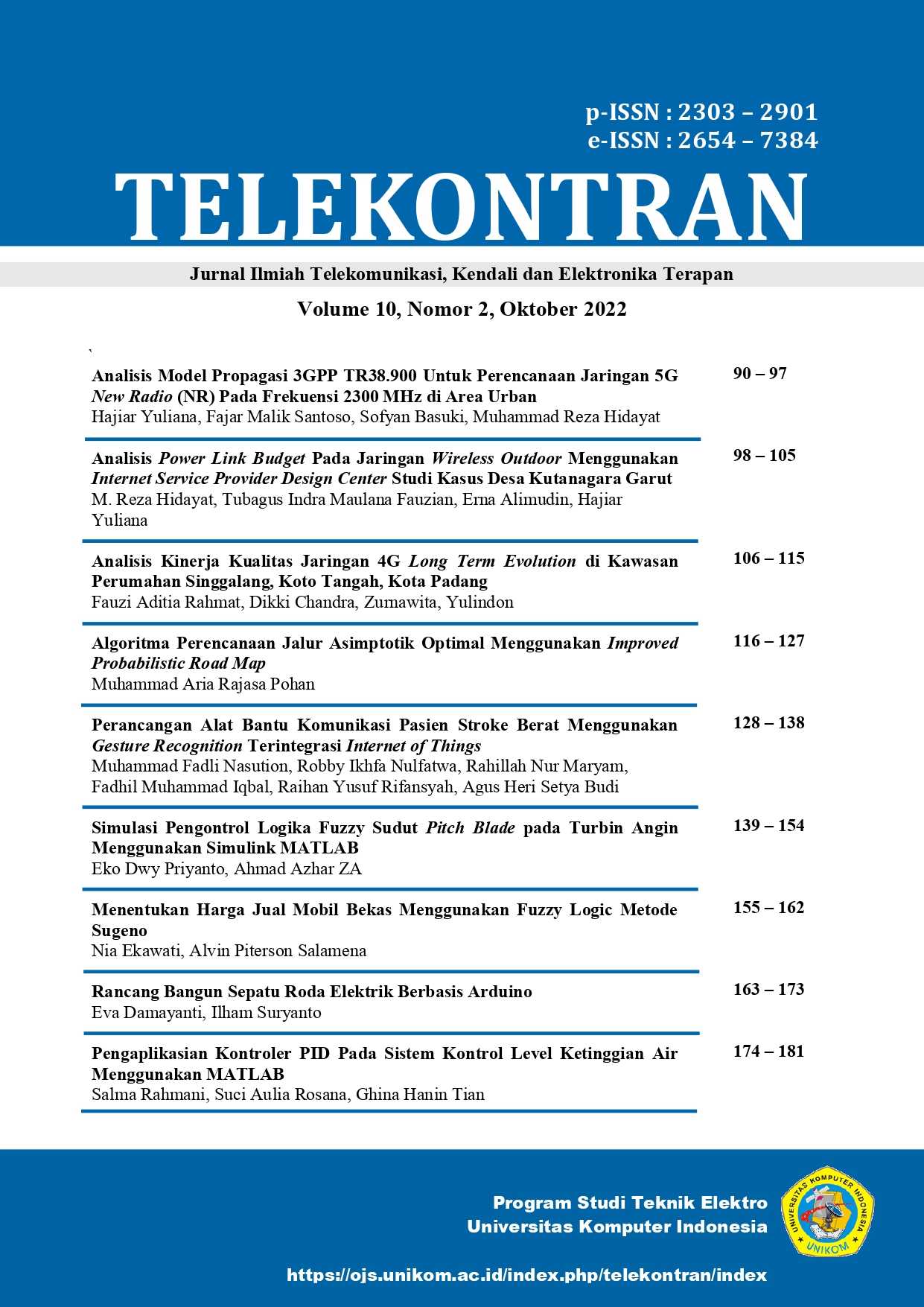Analisis Power Link Budget Pada Rancangan Jaringan Wireless Outdoor Menggunakan ISP Design Center Studi Kasus Desa Kutanagara Garut
Main Article Content
Abstract
One of the problems with internet networks in rural areas is the difficulty of connecting cable-based internet because the distance is too far, wireless/wireless-based internet networks can be an alternative solution to these problems. A research analysis of the Power Link Budget calculation was carried out in planning the outdoor wireless internet network in the village. Kutanagara Garut. The test was carried out using the Power Link Budget calculation method and simulation using the Ubiquiti ISP Design Center application with a LiteAP GPS transmitter device and a NanoBeam 5AC receiver. Network planning is made using the Point to Point (PTP) system in the 5725 MHz frequency band to be precise at 5725 MHz Sub Band NII-3. The parameters tested are SOM (EIRP, margin signal), free space loss (FSL), Fresnel zone clearance (FZC), coverage area, signal strength obtained and internet speed capacity. The results of the calculations and configurations show that the EIRP value of the sender is 36 dBm, the EIRP of the receiver is 36 dBm, the maximum bandwidth is 20 MHz, Fresnel zone clearance is 3.4 m and the received signal strength is -49 dBm. These results have met the standards set by KOMINFO and a network design can be made. The results of the network simulation show that the internet network design has covered the entire area of Kutanagara Garut Village with an estimated signal obtained is -49 dBm, with a signal margin of 46.2 dB which already meets the standards of TIPHON with network classification included in the outstanding category (very good). Has a maximum internet capacity of 147 Mbps consisting of 74 Mbps download speed and 74 Mbps upload speed
Downloads
Article Details
Section

This work is licensed under a Creative Commons Attribution-ShareAlike 4.0 International license.
